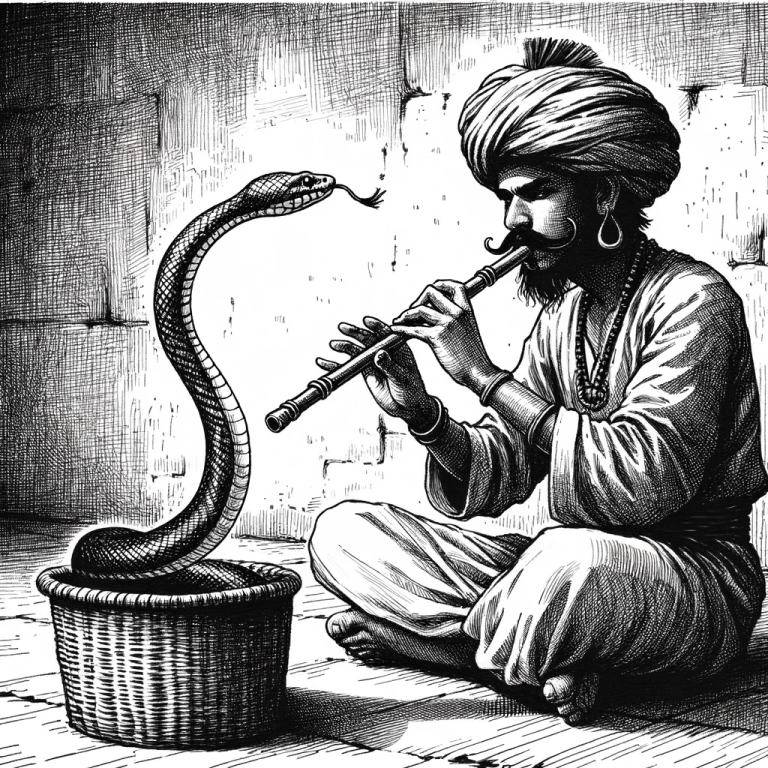In India, since ancient times, there have been people who specialize in capturing cobras, removing their venomous fangs, and using them for snake charming to make a living. In places with wide streets and many pedestrians, they sit on the ground and chant, attracting passersby. The snake charmer sits cross-legged, playing a flute with strange tunes. After a while, they open the bamboo basket containing the cobras, and the cobras extend their heads and necks outside the basket. At this point, the cobras’ necks suddenly swell, and their distinctive hood markings become more prominent. The snake charmer seems to be possessed, swaying their body from side to side, vigorously playing the flute, and feigning tension. The cobras’ heads also sway with the movements, giving the impression that these cobras understand music and can dance to the rhythm.
In reality, cobras do not understand what music is. They simply react to the sharp sounds by raising their heads in anger, swelling their necks, and staring at the snake charmer, moving their heads with the swaying of the charmer’s body, attempting to bite opportunistically. They have no understanding of musical rhythm and melody! To be honest, until now, no snakes have been found to understand music, let alone dance to it.
In movies, some scenes deliberately depict animals like snakes, tigers, and lions as if they understand music and can leap and walk to the rhythm of music. In reality, this is not the case. Music is simply added to accompany their movements, but these animals do not understand music or dance to its rhythm.

